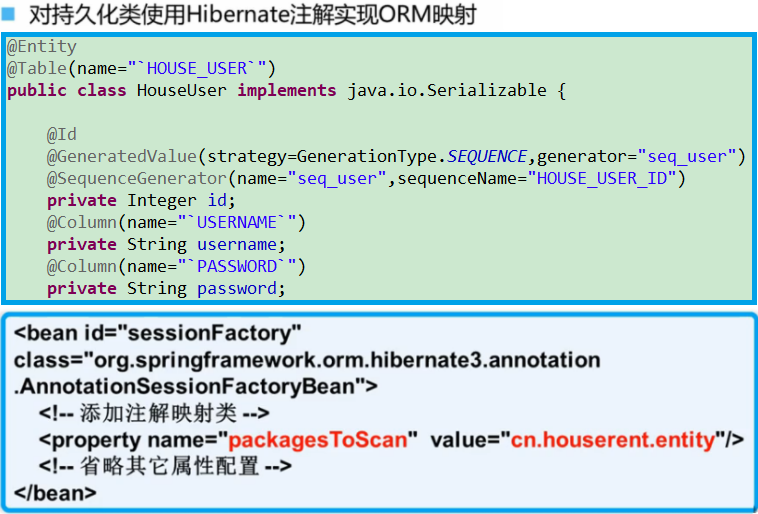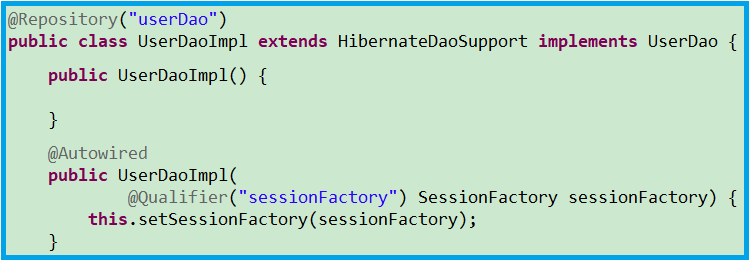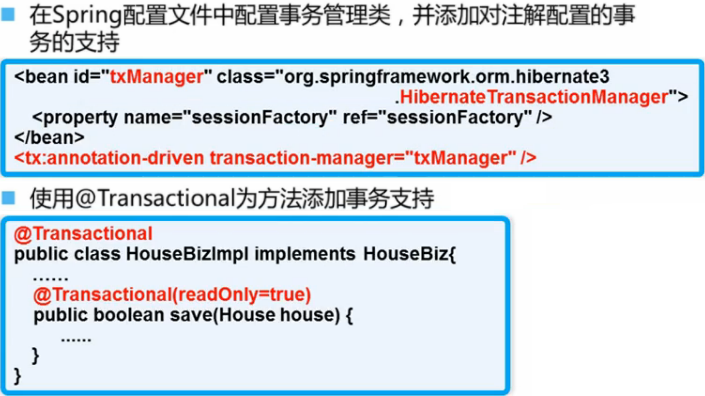SSH架构

开发登录功能

添加所需的jar文件
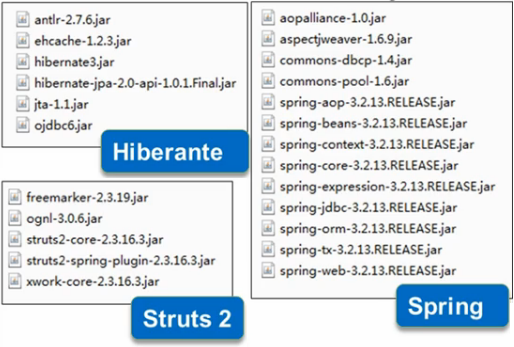
未整合的项目结构
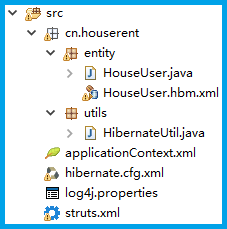

package cn.houserent.entity; public class HouseUser implements java.io.Serializable { private static final long serialVersionUID = -4357515988015534310L; // Fields private Integer id; private String password; private String telephone; private String username; private String isadmin; private String realname; // Constructors /** default constructor */ public HouseUser() { } /** minimal constructor */ public HouseUser(Integer id) { this.id = id; } /** full constructor */ public HouseUser(Integer id, String password, String telephone, String username, String isadmin, String realname) { this.id = id; this.password = password; this.telephone = telephone; this.username = username; this.isadmin = isadmin; this.realname = realname; } // Property accessors public Integer getId() { return this.id; } public void setId(Integer id) { this.id = id; } public String getPassword() { return this.password; } public void setPassword(String password) { this.password = password; } public String getTelephone() { return this.telephone; } public void setTelephone(String telephone) { this.telephone = telephone; } public String getUsername() { return this.username; } public void setUsername(String username) { this.username = username; } public String getIsadmin() { return this.isadmin; } public void setIsadmin(String isadmin) { this.isadmin = isadmin; } public String getRealname() { return this.realname; } public void setRealname(String realname) { this.realname = realname; } }

<?xml version="1.0" encoding="utf-8"?>
<!DOCTYPE hibernate-mapping PUBLIC "-//Hibernate/Hibernate Mapping DTD 3.0//EN"
"http://hibernate.sourceforge.net/hibernate-mapping-3.0.dtd">
<hibernate-mapping>
<class name="com.houserent.entity.HouseUser" table="HOUSE_USER">
<id name="id" type="java.lang.Integer">
<column name="ID" precision="9" scale="0" />
<generator class="sequence">
<param name="sequence">HOUSE_USER_ID</param>
</generator>
</id>
<property name="password" type="java.lang.String">
<column name="PASSWORD" length="50" />
</property>
<property name="telephone" type="java.lang.String">
<column name="TELEPHONE" length="15" />
</property>
<property name="username" type="java.lang.String">
<column name="USERNAME" length="50" />
</property>
<property name="isadmin" type="java.lang.String">
<column name="ISADMIN" length="5" />
</property>
<property name="realname" type="java.lang.String">
<column name="REALNAME" length="50" />
</property>
</class>
</hibernate-mapping>

package cn.houserent.utils; import org.hibernate.HibernateException; import org.hibernate.Session; import org.hibernate.SessionFactory; import org.hibernate.cfg.Configuration; public class HibernateUtil { private static Configuration conf; private static SessionFactory sessionFactory; static { try { conf = new Configuration().configure(); sessionFactory = conf.buildSessionFactory(); } catch (HibernateException e) { e.printStackTrace(); throw new RuntimeException("配置文件初始化错误", e); } } private HibernateUtil() { } public static Session getSession() { return sessionFactory.getCurrentSession(); } }

<?xml version="1.0" encoding="UTF-8"?> <beans xmlns="http://www.springframework.org/schema/beans" xmlns:aop="http://www.springframework.org/schema/aop" xmlns:context="http://www.springframework.org/schema/context" xmlns:tx="http://www.springframework.org/schema/tx" xmlns:xsi="http://www.w3.org/2001/XMLSchema-instance" xsi:schemaLocation="http://www.springframework.org/schema/beans http://www.springframework.org/schema/beans/spring-beans-3.2.xsd http://www.springframework.org/schema/aop http://www.springframework.org/schema/aop/spring-aop-3.2.xsd http://www.springframework.org/schema/context http://www.springframework.org/schema/context/spring-context-3.2.xsd http://www.springframework.org/schema/tx http://www.springframework.org/schema/tx/spring-tx-3.2.xsd "> </beans>

<?xml version='1.0' encoding='UTF-8'?> <!DOCTYPE hibernate-configuration PUBLIC "-//Hibernate/Hibernate Configuration DTD 3.0//EN" "http://hibernate.sourceforge.net/hibernate-configuration-3.0.dtd"> <hibernate-configuration> <session-factory> <property name="dialect">org.hibernate.dialect.Oracle10gDialect</property> <property name="connection.url">jdbc:oracle:thin:@127.0.0.1:1521:xe</property> <property name="connection.username">fang</property> <property name="connection.password">fang</property> <property name="connection.driver_class">oracle.jdbc.driver.OracleDriver</property> <property name="javax.persistence.validation.mode">none</property> <property name="current_session_context_class">thread</property> <property name="format_sql">true</property> <mapping resource="cn/houserent/entity/HouseUser.hbm.xml" /> </session-factory> </hibernate-configuration>

# # Log4J Settings for log4j 1.2.x (via jakarta-commons-logging) # # The five logging levels used by Log are (in order): # # 1. DEBUG (the least serious) # 2. INFO # 3. WARN # 4. ERROR # 5. FATAL (the most serious) # Set root logger level to WARN and append to stdout log4j.rootLogger=DEBUG, stdout log4j.appender.stdout=org.apache.log4j.ConsoleAppender log4j.appender.stdout.Target=System.out log4j.appender.stdout.layout=org.apache.log4j.PatternLayout # Pattern to output the caller's file name and line number. log4j.appender.stdout.layout.ConversionPattern=%d %5p (%c:%L) - %m%n # Print only messages of level ERROR or above in the package noModule. log4j.logger.noModule=FATAL log4j.logger.com.opensymphony.xwork2=ERROR log4j.logger.org.apache.struts2=ERROR log4j.logger.freemarker=ERROR ### log HQL query parser activity #log4j.logger.org.hibernate.hql.ast.AST=debug ### log just the SQL #log4j.logger.org.hibernate.SQL=debug ### log JDBC bind parameters ### #log4j.logger.org.hibernate.type=info #log4j.logger.org.hibernate.type=debug log4j.logger.org.hibernate.type.descriptor.sql.BasicBinder=TRACE

<?xml version="1.0" encoding="UTF-8" ?> <!DOCTYPE struts PUBLIC "-//Apache Software Foundation//DTD Struts Configuration 2.3//EN" "http://struts.apache.org/dtds/struts-2.3.dtd"> <struts> <constant name="struts.enable.DynamicMethodInvocation" value="true" /> <constant name="struts.devMode" value="true" /> <constant name="struts.i18n.encoding" value="utf-8" /> <constant name="struts.multipart.maxSize" value="5000000"/> <package name="default" namespace="/" extends="json-default"> </package> </struts>

public class testDao { @Test public void test() { Transaction tx = HibernateUtil.getSession().beginTransaction(); List<HouseUser> users = HibernateUtil.getSession() .createQuery("from HouseUser").list(); for (HouseUser user : users) { System.out.println(user.getUsername()); } tx.commit(); } }
在Spring中配置数据源和会话工厂


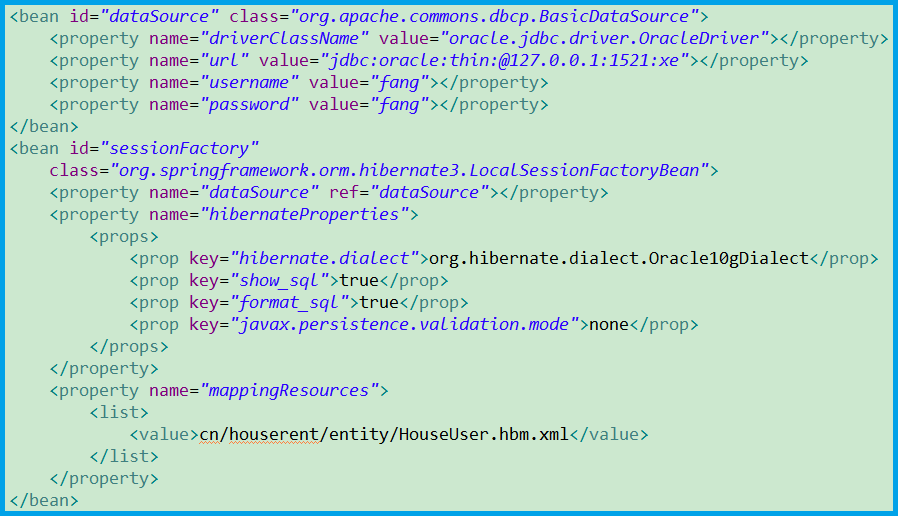

public class testDao { @Test public void testSpringSessionFactory() { ApplicationContext ctx = new ClassPathXmlApplicationContext( "applicationContext.xml"); SessionFactory sessionFactory = (SessionFactory) ctx .getBean("sessionFactory"); Transaction tx = sessionFactory.openSession().beginTransaction(); List<HouseUser> users = sessionFactory.openSession() .createQuery("from HouseUser").list(); for (HouseUser user : users) { System.out.println(user.getUsername()); } tx.commit(); } }
实现并配置DAO
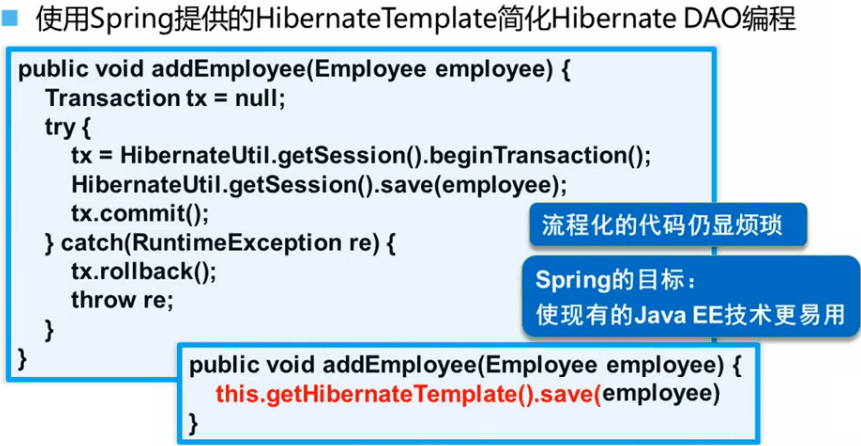

模板与回调机制


实现并配置Service

为业务层添加事务管理

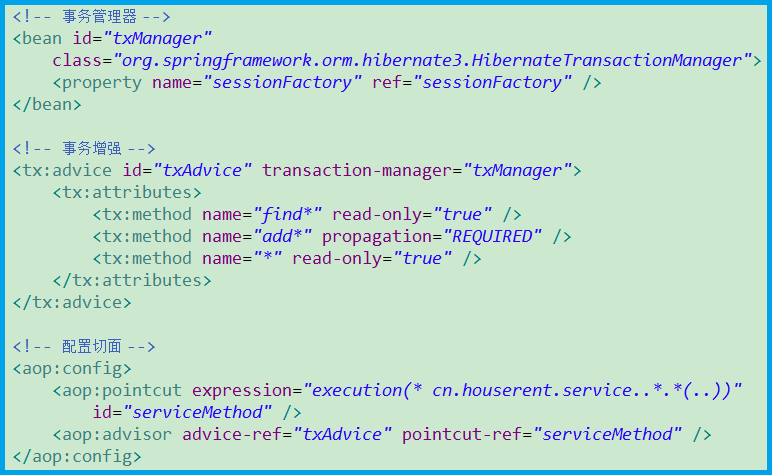
实现并配置Action


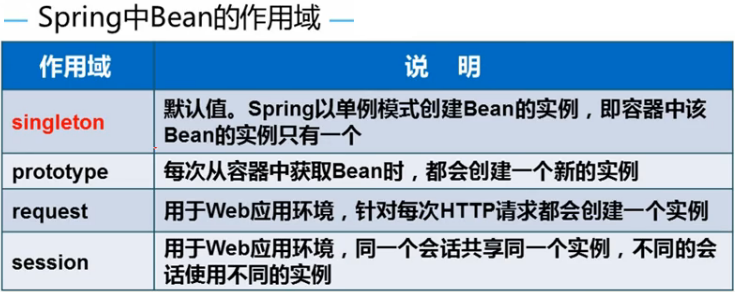
配置web.xml文件
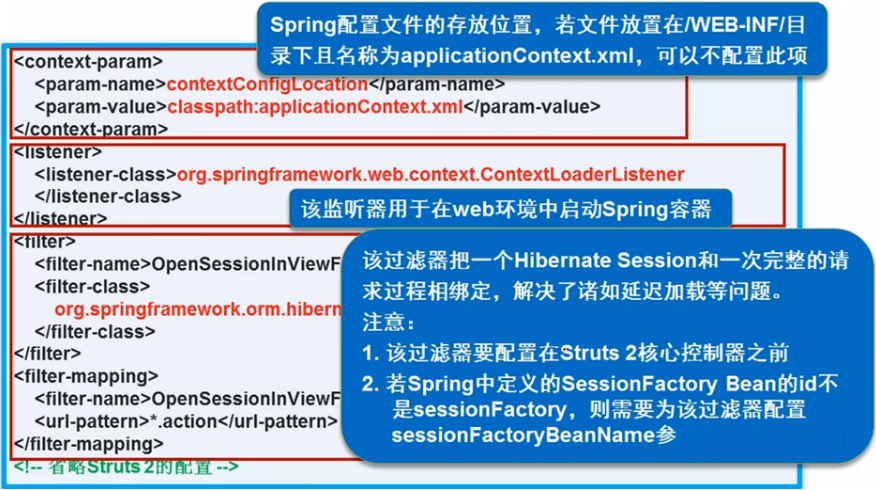

使用注解实现SSH集成
